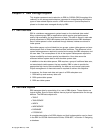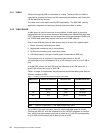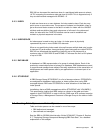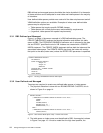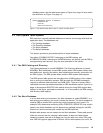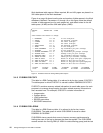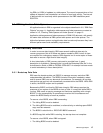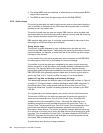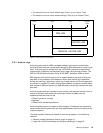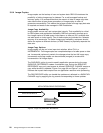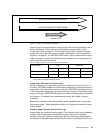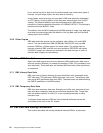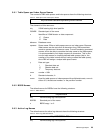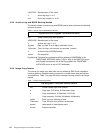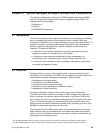18 Storage Management with DB2 for OS/390
2. The failing BSDS must be redefined, or alternatively, an existing spare BSDS
copy must be renamed.
3. The BSDS is rebuilt from the good copy with an IDCAMS REPRO.
3.6.2 Active Logs
The active log data sets are used for data recovery and to ensure data integrity in
case of software or hardware errors. DB2 uses active log data sets to record all
updates to user and system data.
The active log data sets are open as long as DB2 is active. Active log data sets
are reused when the total active log space is used up, but only after the active log
(to be overlaid) has been copied to an archive log.
DB2 supports dual active logs. It is strongly recommended to make use of dual
active logs for all DB2 production environments.
Sizing Active Logs
The amount of space dedicated to each individual active log data set is not
critical for the DB2 administrator. Traditionally, the active logs have been sized for
practical reasons, for example, to make best use of the archive log device (tape
cartridge or disk volume).
It is the overall size of all active log data sets that is important for the DB2 DBA:
this size plays a critical role in the backup and recovery strategy.
The number of active log data sets, multiplied by the space of each active log,
defines an amount of log information most readily available: the capacity of the
active log. This capacity defines the time period that has the best recovery
performance and the highest data availability service level. The reason is that the
DB2 RECOVER utility generally performs better with an active log than with an
archive log. See 10.5.2, “Active Log Size” on page 117 for more details.
Impact of Log Size on Backup and Recovery Strategy
The relationship between the different types of log data sets is shown in Figure 5
on page 19. This figure shows a timeline that begins when a DB2 subsystem is
first started (Start Time) and proceeds until the current time (Current Time).
During this whole time, log data has been generated; this is shown by the DB2
LOG bar.
The log data sets have limited capacity and cannot cover the total time period.
The amount of DB2 log in the active log data sets (the active log capacity) is
shown as the time period from Time 2 to the Current Time. The oldest still
available archive log corresponds to Time 1. Because the whole log is not
available, recoveries are only possible throughout the period from Time 1 to
Current Time. The time period from Time 2 to Current Time corresponds to the
period with most efficient recoveries because, generally, the active log is
allocated on faster devices. The archive log usually overlaps with the active log
for a minimum of the last pair of active log data sets not yet archived up to some
time after Time 2 and before Current Time. If the data needed for RECOVER or
RESTART has been archived, but is still available on an active log data set not
yet reused, DB2 accesses the active log.
A good backup and recovery strategy considers:




